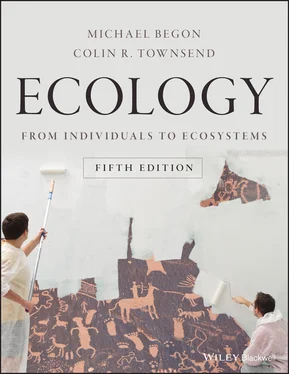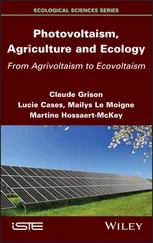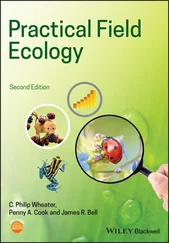We do not have such good records for the postglacial spread of animals associated with the changing forests, but it is certain that many species could not have spread faster than the trees on which they feed. Some of the animals may still be catching up with their plants, and tree species are still returning to areas they occupied before the last ice age. It is quite wrong to imagine that our present vegetation is in some sort of equilibrium with (adapted to) the present climate.
Even in regions that were never glaciated, pollen deposits record complex changes in distributions. In the mountains of the Sheep Range, Nevada, for example, different woody species of plant show different patterns of change in the ranges of elevations that they have occupied as climate has changed ( Figure 1.18). The species composition of vegetation has continually been changing and is almost certainly still doing so.
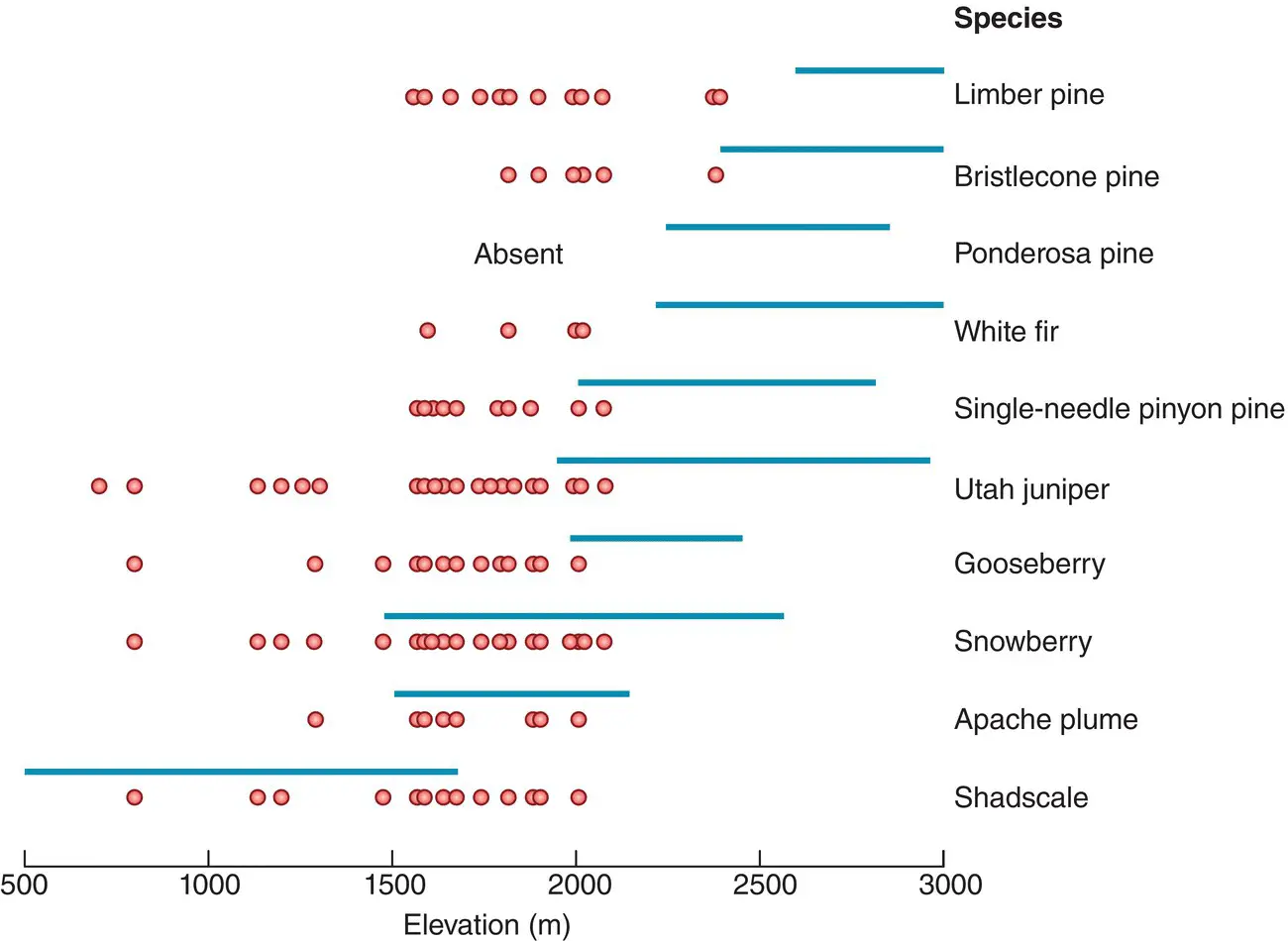
Figure 1.18 Contrasting changes between fossil and current distributions of 10 species of woody plant from the mountains of the Sheep Range, Nevada.The red dots represent fossil records, while the blue lines show current elevational ranges.
Source : After Davis & Shaw (2001).
The records of climatic change in the tropics are far less complete than those for temperate regions. It has been suggested, though, that during cooler, drier glacial periods, the tropical forests retreated to smaller patches, surrounded by a sea of savanna, within which speciation was intense, giving rise to present‐day ‘hot spots’ of endemism. Evidence for this in, for example, the Amazonian rainforest now seems less certain than it once did, but there is support for the idea in other regions. In the Australian wet tropics of Queensland, north‐eastern Australia, it has been possible to use present‐day distributions of forest to predict distributions in the cool‐dry climate of the last glacial maximum when forest contraction was greatest (about 18 000 years ago), the cool‐wet period around 7000 years ago when a massive expansion was likely, and the warm‐wet period around 4000 years ago when there was likely to have been another contraction ( Figure 1.19a) (Graham et al ., 2006). Putting the distributions together, then, allows each subregion of the forest to be assigned a 'stability' ( Figure 1.19b) – the most stable being the one in which forest has been most constantly present – and these stabilities can in turn be compared with the species richness today, in each subregion, of mammals, birds, reptiles and frogs. Richness tends to be greatest where stability has been highest ( Figure 1.19c), that is, where the forest refuges were in the past. On this interpretation, the present distributions of species may again be seen as largely accidents of history (where the refuges were) rather than precise matches between species and their differing environments.

Figure 1.19 Forest species richness is positively related to forest ‘stability’ in north‐east Australia.(a) A predictive study of the distribution of Australian 'wet forest' in Queensland (see inset), based on climatic conditions at 2000 random points in the current forested region. From left to right are the predicted overall distribution of forest across the region in cool‐dry (18 000 years ago), cool‐wet (7000 years ago), warm‐wet (4000 years ago) and current climatic conditions. The values between 0 and 1 indicate the probability, according to the model, of forest being found at a given point. (b) Forest 'stability', which is calculated simply as the sum of the values in the four figures in (a). (c) Current species richness in 21 forest subregions (of mammals, birds, reptiles and frogs) increases with estimated 'stability'. The axes are scaled around zero because both stability and species richness were standardised to take account of the fact that both increase with subregion area.
Source : After Graham et al . (2006).
APPLICATION 1.4 Global warming and species distributions and extinctions
Evidence of changes in vegetation that followed the last retreat of the ice provides clues about the likely consequences of global warming associated with the continuing increases of carbon dioxide and other greenhouse gases in the atmosphere. Warming of 0.7°C in average global mean surface temperature was recorded between 1970 and 2010. Future climate will depend on warming still to occur but as a result of past anthropogenic emissions, future emissions, natural climate variability and whether or not major volcanic eruptions occur. Models that take into account various scenarios indicate that, relative to 1850–1900, global surface temperature increase by the end of the 21st century is likely to exceed 2°C (IPCC, 2014). But note that the scale of current temperature change is dramatically different from that which has occurred since the last ice age. Postglacial warming of 8°C over 20 000 years, or 0.04°C per century, must be compared with the current rate of global warming of about 1.75°C per century. It is disturbing to note that changes in the vegetation failed to keep pace even with a rise of 0.04°C per century. Projections for the 21st century require range shifts for trees at rates of 300–500 km per century compared with typical rates in the past of 20–40 km per century (and exceptional rates of 100–150 km). It is striking that the only precisely dated extinction of a tree species in the Quaternary period, that of Picea critchfeldii , occurred around 15 000 years ago at a time of especially rapid postglacial warming (Jackson & Weng, 1999). Clearly, even more rapid change in the future could result in extinctions of many additional species (Davis & Shaw, 2001).
The Pleistocene ice ages undoubtedly eliminated biota from many mid‐ to high‐latitude areas of the planet. However, in the case of alpine species of the Pyrenees, Himalayas, Andes and Southern Alps, evidence is accumulating that glaciation may sometimes have promoted allopatric speciation by severing continuously distributed populations along the length of mountain ranges (Wallis et al ., 2016). In the Southern Alps of New Zealand, for example, comparative phylogeographic analysis, based on mitochondrial and nuclear DNA, has revealed a phylogenetic split 2 mya (the date of the first major glacial epoch), found in both insect and bird biotas, that bisects each into northern and southern assemblages ( Figure 1.20).
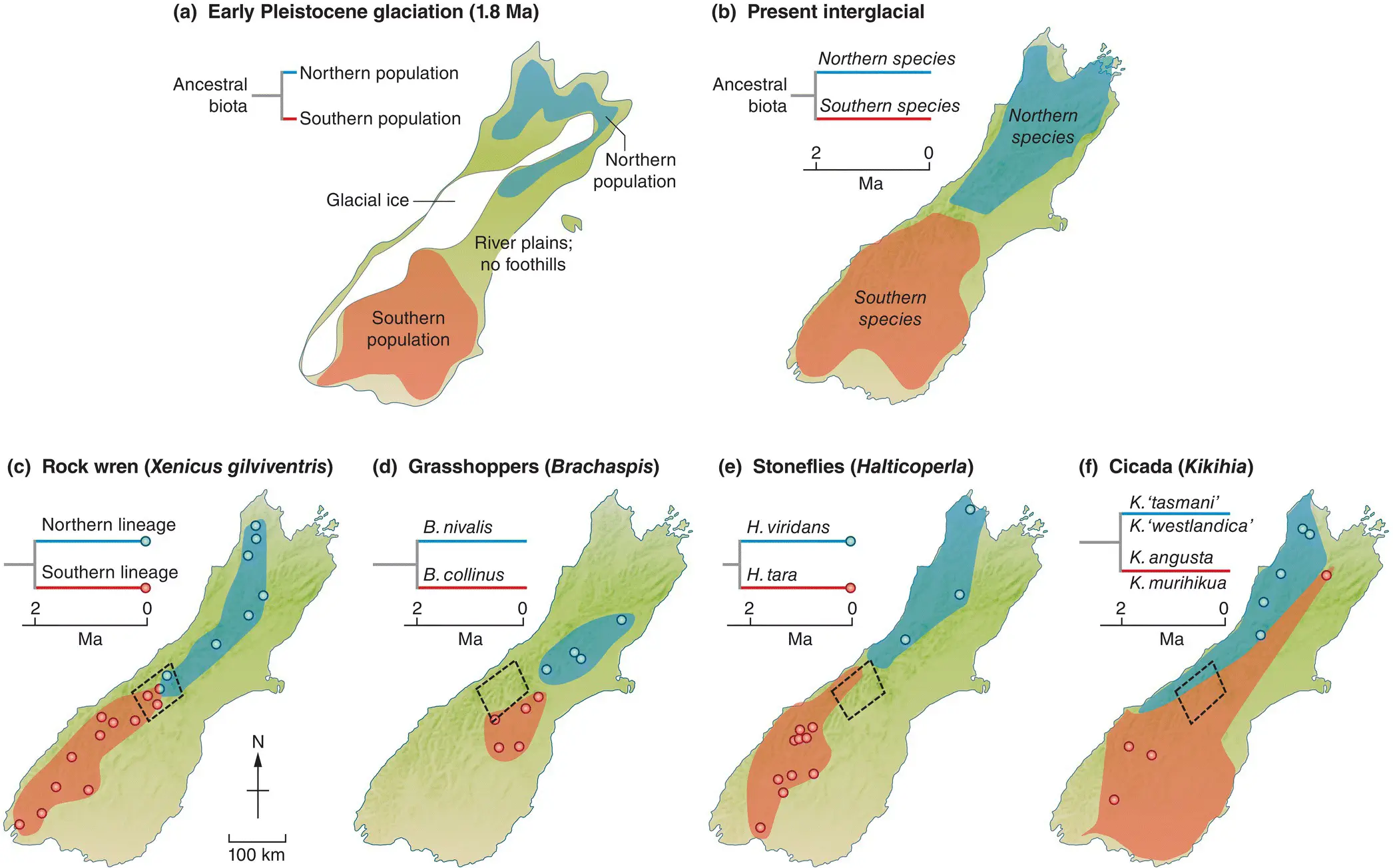
Figure 1.20 A phylogenetic split bisecting insect and bird biotas into northern and southern assemblages in New Zealand.(a, b) Glaciation of the alpine region of the South Island of New Zealand which is hypothesised to be responsible for fracturing the ancestral biota into north and south lineages that have subsequently diverged. Green shading represents lowlands. (c–f) North–south phylogeographic breaks for alpine birds and insects with dendrograms showing phylogenetic relationships and approximate divergence times. Sampling sites are shown as circles, the shading shows approximate taxon ranges, and the dotted square represents a particularly highly glaciated narrow alpine neck.
Читать дальше
